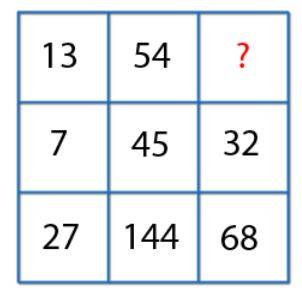
Rachit Kumar SaxenaManager-Editorial
What are Missing Numbers?
Missing numbers are the numbers that have been skipped in several identical variations between the series issued.
The method of writing the missing numbers is defined as identifying related differences between certain numbers and filling in the particular series and positions with the missing words.
Missing Sequence of Numbers
A sequence of numbers following a given law or formula is a number set. There are several forms of series, and one of them is the missing number series. A sequence is issued with one missing number in the missing number series, and you are asked to locate the missing name.
In a Sequence, how to Locate the Missing Number?
You will also find missing numbers at the beginning or at the end of the series in the specified missing number set. In the missing number sequence, the structure is close to the incorrect number series. You need to specify the rule and then use the rule to approximate the next number.
Below are the steps to locate the missing numbers:
1. Select 2 or 3 words in the text to add the rule to locate the missing number. For starters, if you have 5 numbers in a sequence, then select the first 3 words to validate the rule to be added.
2. Choose a number that is easy to work with when selecting the number to verify the rule. These contain terms that are 2, 3, 5, or 10 variables. Use some common methods to verify the series, such as the sum of terms, squares, cubes, or others.
Weightage of Missing Numbers
In class 10th, the arithmetic progression, you may come across some questions, where you have to use missing number concepts. The weightage is 4-5 marks. In Class 11, weightage is 6-7 marks.
Illustrated Examples on Missing Numbers
1. In the following list, notice a missing number: 5, 7, 11,? , 17, 19
Solution. The number found to be absent is 13.
This is because, in a number line, all the specified number orders include the prime numbers 5, 7, 11, 13, 17, 19, all of which are divisible by only '1' and themselves.
The numerical line sequence would then be 5, 7, 11, 13, 17, 19.
2. In the following number rows, notice a missing number: 1, 3, 9, 15, 25,? , 49.
Solution. The number that is missing is 35.
This is since all the number sequences are squares and alternatively (squares-1) like One square = 1,
2 of a square = 4, so 4-1 = 3,
Square three = 9,
Four squares = 16, so 16-1 = 15,
Six squares = 36, so 36-1 = 35
Therefore, 1, 3, 9, 15, 25, 35, 49 will be the number line.
3. Find the missing number.
Solution. 27- 7*2 = 13
144 - 45*2 = 54
68 -32*2 = 4
FAQs on Missing Numbers
Q: How can you find a number in a sequence that is missing?
Calculate the variations between the ones adjacent to each other.
To measure the missing number, estimate the difference between the figures.
Q: In algebra, what is a series?
Q: How do you describe a sequence?
Q: What is the distinction between sequence and series?
Q: How do you find the median of a missing number?
News & Updates
Sequence and Series Exam
Student Forum
Popular Courses After 12th
Exams: BHU UET | KUK Entrance Exam | JMI Entrance Exam
Bachelor of Design in Animation (BDes)
Exams: UCEED | NIFT Entrance Exam | NID Entrance Exam
BA LLB (Bachelor of Arts + Bachelor of Laws)
Exams: CLAT | AILET | LSAT India
Bachelor of Journalism & Mass Communication (BJMC)
Exams: LUACMAT | SRMHCAT | GD Goenka Test
